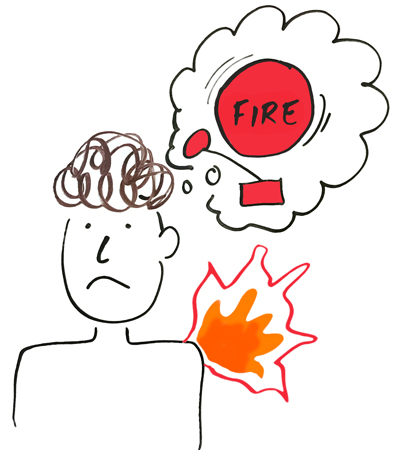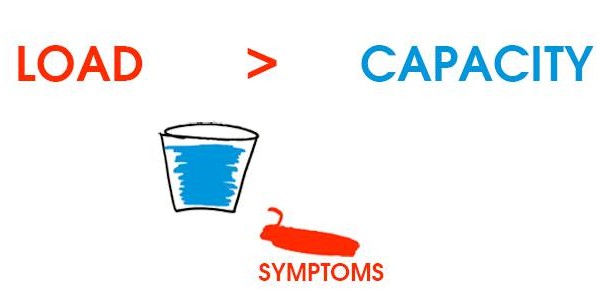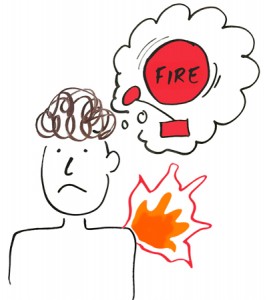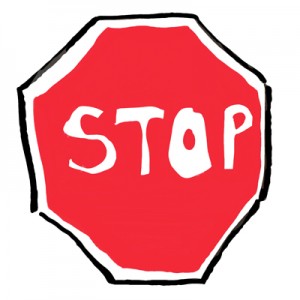
21 Sep 2 Steps You Must Take When You’re in Pain: About Symptoms
If you’re reading this, you either:
a) are in pain in the present.
b) were in pain in the past.
c) want to prevent pain in the future.
If none of the above apply, you can stop reading now.
If you want to avoid symptoms (specifically, the symptom of pain) and seek pleasure like most organisms do now and until you die, read on.
What is a symptom (in depth)?
If you haven’t already fully grasped the concepts of load and capacity, you need to.
Load is work you do.
Capacity is work you’re able to do.
These concepts govern all pain, disease, as well as fitness, and health. Not only for your musculoskeletal health, but even for the health of your organs and the length of your life. That’s for another time.
When your load exceeds your capacity, you have symptoms.
Symptoms: any sensation observed by your conscious mind that tells you that you’ve caused damage. Musculoskeletal symptoms include:
- generally pain
- stiffness
- burning (this burning is different from the burning caused by inflammation in a workout, which is normal and healthy.)
- throbbing
- sharpness
- tenderness
- achiness
- numbness
- tingling
- tightness (sometimes a symptom and sometimes not.)
- etc.
Here, we will pause to fully grasp the above image.
A symptom tells you when a specific part of your body has done all the work that it is capable of and no longer wants to do any more work. The symptom’s purpose, evolutionary speaking, is to get you to STOP doing whatever you were doing that overloaded that body part. The nervous system, which evolved to be the fire alarm for your body when there is a fire, is trying to get you to put the fire out.
The nervous system is NOT bringing pain to your awareness so that you can unplug the metaphorical fire alarm and let the fire rage on, causing further damage has the fire continues to grow and worsen. Examples of unplugging the fire alarm include:
a) getting a cortisone shot.
b) taking pain medication in any form.
c) wearing kinesiotape.
d) receiving a reflexive form of therapy that only neurologically relaxes your symptomatic tissue without reducing pathology, making the symptoms come back within 24 hours of receiving that treatment.
The nervous system IS bringing pain to your awareness so that you can put the fire out. Only by putting the fire out will you prevent further damage to your already existing disc herniation, osteoarthritis, labrum/cartilage tear, or other structural dysfunction.
What are symptoms (in short)?
Symptoms = a STOP sign.
Stop doing whatever you are doing that makes the pain worse.
What 2 steps should you take now?
Below are 2 steps you must take when you’re in pain:
- Stop: Don’t do whatever provokes your symptoms. You’re causing further damage and only setting yourself up for a longer journey to repair the home that gives you life.
- Find Answers: You need to figure out what the problem is (Medically speaking, the problem is called a “pathology” or biomechanically speaking, the problem is called a “dysfunction“).
Not stopping when you’re in pain is akin to letting your house burn, slowly and systematically.
You might be amazed to realize that there are chronic pain sufferers out there who have been to one, five, or even upwards of ten healthcare practitioners and still have no idea what the pathology is that is causing their symptoms.
This, ladies and gentleman, is unacceptable.
More on dysfunctions and diagnosis later.




A Holistic (and Effective) Approach to Chronic Pain Resolution: Respecting Dysfunction
Posted at 14:34h, 01 October[…] Symptoms are nervous system signals making your conscious mind aware when load has exceeded capacity. […]
You're in pain: You Better Understand Load and Capacity
Posted at 20:17h, 26 January[…] When load EXCEEDS your capacity and water overflows out of your bucket, you are living a lifestyle that is currently more demanding than your capacity will allow. Injury sets in and you have musculoskeletal symptoms. […]
The Truth About Achilles Tendinitis (And Achilles Pain)
Posted at 21:59h, 02 February[…] diseased tendon. One that can not handle the load you put on it (and lets you know with the fire alarm that is “pain”) when you’re walking, running, sprinting, or jumping, leaving you at risk for further […]
The Chiropractor with the Broken Back: Individualizing Fitness To Teach Respect
Posted at 17:29h, 21 February[…] as your bucket is big enough to handle all of the water of movement, you won’t experience any symptoms) I didn’t think much of the “tension”. When I got home from vacation, I went to the gym to […]
Barefoot Rehab | Able at 80
Posted at 18:12h, 17 May[…] to address your pain, you simply have to avoid putting so much stress on your body that your body’s fire alarm goes […]